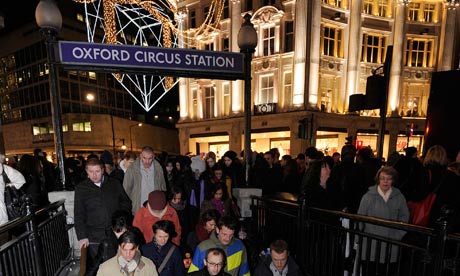It was after 10 PM local time in London, Tuesday, December 10th, when we touched down at Heathrow. An eight-hour journey, plus the time difference, and I am advanced 14 hours ahead. It was a full of traveling indeed.
I am a seasoned traveler, and there are things I navigate to get to where I need to get. My stuff, for one thing. I managed to pack tightly and lightly, so everything I had was carry-on. No hassling with baggage claim.
Then, it's passport control, and basically that's it and I'm past checkpoints.
Besides O'Hare, Heathrow has given me the most trouble as far as security is concerned. It's not even trouble, really. Just annoying interrogation and procedures. For example, the passport control staff asked me how I was getting paid, and the question made me curious. But after a clarification or two, she asked directly whether I was going to receive any payments for my client consulting, when I was still in the UK. No, indeed.
Then, it was my transport.
I didn't have details of my itinerary from the client, when I left the house, but I downloaded them when I checked for her e-mail, while I was at O'Hare. I downloaded them right into Dropbox. It's a popular cloud service, from where I've been able to open files while offline.
Except when our flight landed, I couldn't. I did copy and paste the details for my contact in London, but it was late a night. So she wasn't in the office.
Lo and behold, my transport wasn't there. I checked more than once, and even went outside, before weighing my options to get to the Radisson Blu Portman. At least I memorized the name and its locale in Portman Square in Central London.
I checked with the information lady, and she didn't know where the hotel was. So she immediately suggested taking a taxi. Too expensive, as I'm on such a tight budget. The Underground, then. She was the first of several who helped me get to the Radisson.
I wound down slanting corridors to the Underground, maybe akin to the Phantom's lair beneath the Paris Opera House.
 |
| (image credit) |
Once there, I asked a police officer, and he said the hotel was near Oxford Circus station. Take the Piccadilly Line, Platform 2. There, I went. He was the second.
I asked the ticket clerk as well, but he had no idea. The fact that he gave me an Underground map was huge, though. He was the third.
I didn't know whether I was on Platform 2, so I asked another gentleman, and he confirmed that I was. I had occasion to ask him about Oxford Circus, and he pointed out on his mobile that I had to switch Lines to get there. We sat in the same car, as I stared and stared at the Underground map. I was tired, and I knew I had to get a bearing on where I was and where I needed to head. He was the fourth.
It felt like I was traveling forever.
That fourth gentleman got off at Green Park, and he approached me, and said I should get off there, too, and catch the Victoria Line.
It had been ages since I was last in London, but one of the things I remembered most was the long escalators of the Underground. So I took a quick video up, then down one of those escalators. I was already at Oxford Circus, and was winding myself up to street level again.
I looked at map before heading into the street, and I could not find Portman Square. So I asked a fifth. He couldn't find it, either, but he was sure where it was. I was to head left on Oxford Street, and it was near the intersection with Bond Street.
It was well after 11 PM, and London still seemed to hum and chatter with people and to rumble with the engines of cars, taxis and buses. It was nippy out, but no where near the frigid temperatures of Chicago. White balls of light hung above the street, and I wished Karen and Eva were with me, as they'd enjoy this festive sight.
 |
| (image credit) |
The walking I did at Heathrow, and now in London, was to count for my cardio workout for that day.
Bond Street, and I asked yet a sixth person, off the street. He pointed me to a tall building that he said was the Radisson, and its entrance was back and off to the left.
Ah, it is the Radisson Blu. Except that the check-in clerk said he couldn't find my reservation. As it turned out, I was not at the right Radisson Blu. But of course he knew exactly where the Portman hotel was, and gave me directions there. Over to the left and up. About a 15-minute walk. Shall I get you a taxi? No, thanks, it's a nice walk. Conserve money was my protocol for the entire trip.
He was the seventh and final person to help me.
I am thankful to God for all of them. For being kind and friendly, and for being exactly right in their directions. They made my `Algorithm for Spatial Orientation work perfectly.




























